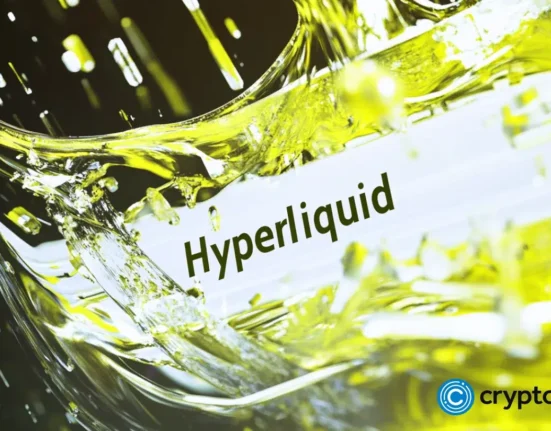
Ether had the worst first quarter in seven years regarding price action. Nevertheless, the Ethereum platform continues to develop as founder Vitalik Buterin introduces a new roadmap to increase the ecosystem’s security and finality.
Ethereum killers
Platforms copying Ethereum’s functionality while trying to tackle its downsides are usually dubbed “Ethereum killers.”
Talks about Ethereum’s death have been so persistent that a special website called Ethereum Obituaries was created. It tracks all the Ethereum “deaths,” ticking at the 133 mark as of press time.
Ethereum is criticized for ignoring the community’s demands and opinions during the current cycle.
In general, Ethereum’s market underperformance, especially compared to Solana’s success, may signal a serious crisis.
Even though Ethereum’s journey has been rough lately, and, at times, users and developers showed preference for its competitors, Ether is still the second-largest crypto after Bitcoin in terms of market capitalization.
In March, Ethereum outpaced its main competitor, Solana, in trading volume by 22%, becoming the leading platform in the DeFi space for the first time since September 2024. In terms of TVL, Ethereum is by far larger than Solana.
Furthermore, 53% of the stablecoin market is built on Ethereum. So, despite the ongoing price decline, Ethereum is still the second-biggest crypto brand after Bitcoin.
The platform still has many supporters among crypto enthusiasts, investors, and professionals from the crypto sector. Buterin is still a prominent voice in the crypto space, and what matters most is that the platform keeps on moving forward.
The new roadmap introduced in March confirms this.
Scalability issues
The new roadmap, published on March 28, reveals the planned steps to tackle one of Ethereum’s most notorious problems–its poor scalability. Throughout the time, the network experienced several major congestions that resulted in performance lags.
The most prominent example is the network slowing down caused by the Cryptokitties game in December 2017. The game involved in-game ETH transactions, and in December 2017, their volume reached 10% of all Ethereum transactions, causing substantial lags in the network.
The scalability concerns were discussed in 2017, and by 2025, Ethereum is still struggling to address this issue, which is very critical, given that Ethereum serves as the backbone for the majority of the NFT and stablecoin markets and various other decentralized platforms and tokens built on top of it.
The Ethereum team has been working on a solution ever since, and the 2022 transition from the proof-of-work consensus mechanism to proof-of-stake was one of the crucial steps in this direction.
In addition to addressing the scalability issues, the new roadmap aims to increase the network’s security.
Digesting the new roadmap
Buterin outlined three directions in the future development of Ethereum:
- Increasing the number of blobs up to 72 by 2026
- Reaching instant secure finality via 2-of-3 hybrid-proof architecture
- Improving aggregation levels
This list may seem difficult to understand for people unfamiliar with Ethereum’s architecture, so we’ll break it down.
The improvements will involve the increase of active roll-ups and blobs. Roll-ups are smart contracts that settle transactions off-chain and relay the data back to the mainnet, thus elevating the network’s speed and decreasing transaction costs.
There are three different layers of roll-ups: optimism (OP), zero-knowledge (ZK), and trusted execution environments (TEE).
Ethereum aims to scale through sharding, a split of the network into smaller manageable sections. Blobs are the Proto-Danksharding objects used to structure data. Increasing the number of blobs improves the work of rollups.
According to Buterin, by the end of the year, the network upgraded to the Pectra version (an upgrade is scheduled for May 2025) will use six blobs, while the Fusaka version of the network may use up to 72 blobs.
The base direction of the new roadmap is deploying a hybrid-proof architecture that will increase the speed and soundness of the Ethereum network.
To avoid dependency on a single type of proof, Ethereum will use a hybrid model in which transactions may be finalized immediately if their state roots are approved both via ZK and TEE rollups.
If ZK or TEE doesn’t approve a transaction, it gets approved with the help of the OP rollups, but it will take much longer.
According to Buterin’s description, such cases won’t be normal. Most of the transactions will be finalized instantly while being approved by two independent roll-ups, one of which (ZK) is fully trustless.
Buterin concludes:
This gets us to a pragmatic higher level of fast finality and security while getting us to the key stage 2 milestone of full trustlessness in the case where proof systems (OP and ZK) work correctly. It will reduce round-trip times for market makers to 1 hour or even much lower, allowing fees for intent-based cross-L2 bridging to be very low.
In the final part of the roadmap, Buterin stressed that the dev team should work harder on standardized proof aggregation layers scaled to the entire Ethereum ecosystem.
ZK-based proof systems should use single aggregate proofs to reduce gas expenses. Vitalk named Layer2 applications and zkemail-like wallet recoveries “the most natural initial use cases” for that.
The roadmap received mixed feedback, as some in the Ethereum community didn’t like its focus on Layer2. Will the proposed changes save Ethereum from tumbling down? Time will tell.









Leave feedback about this